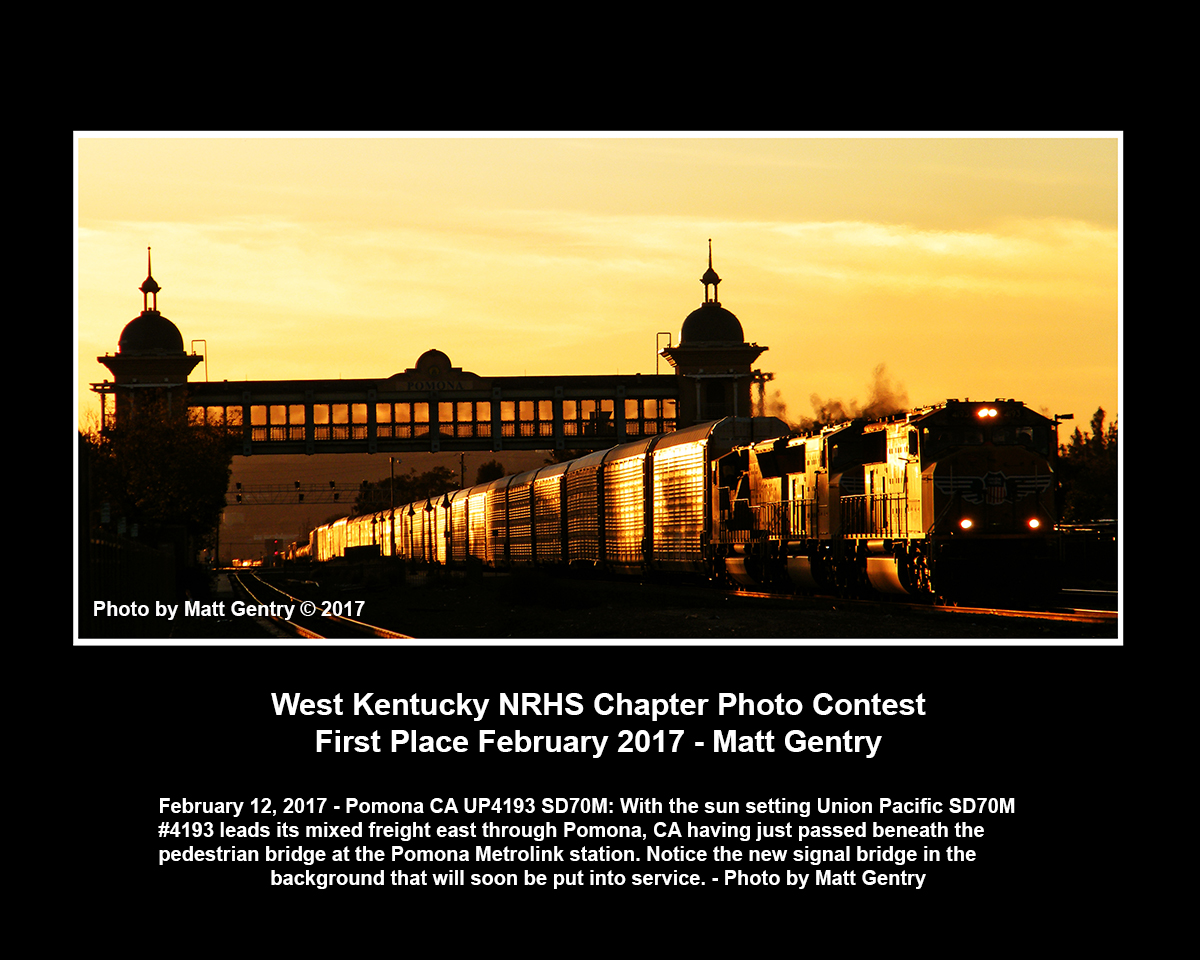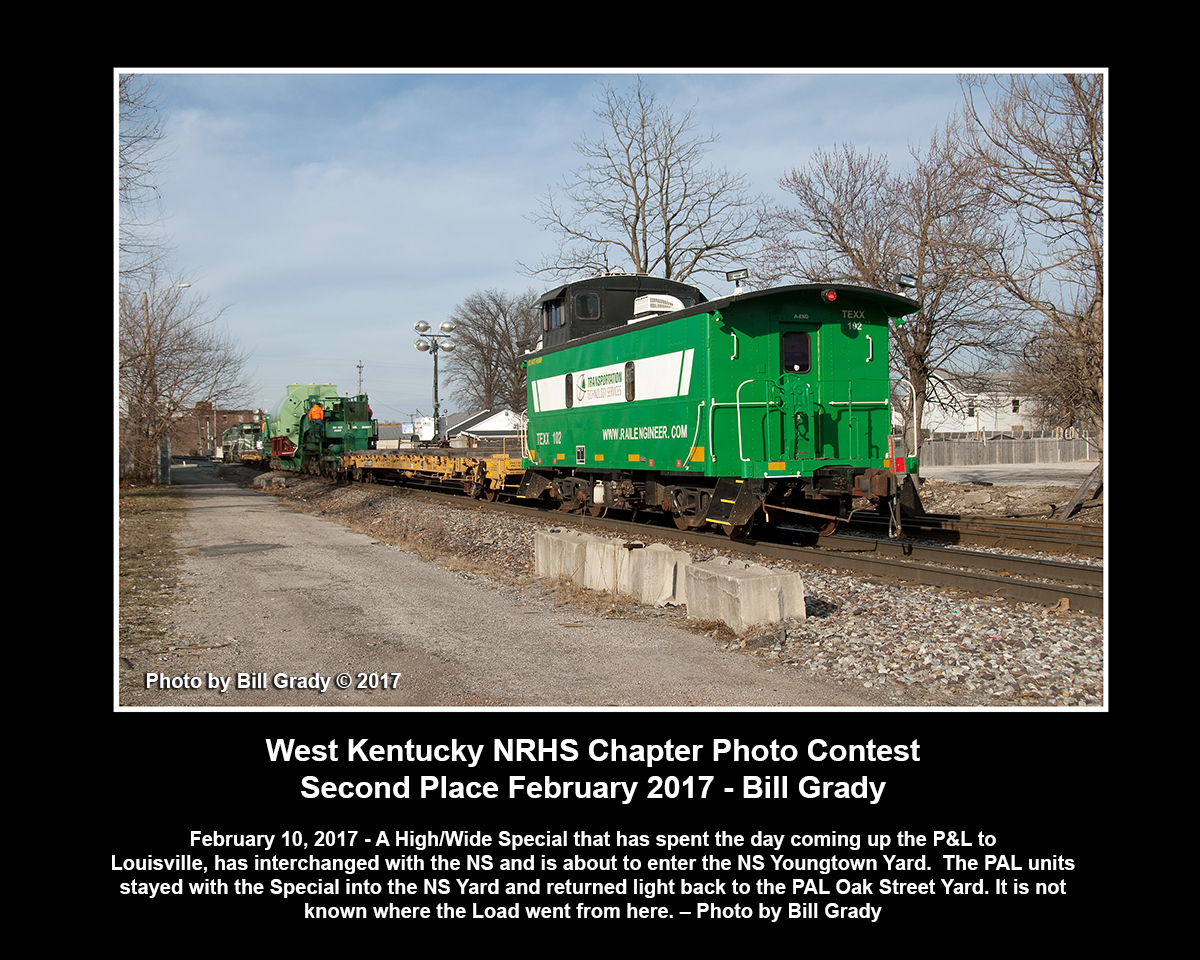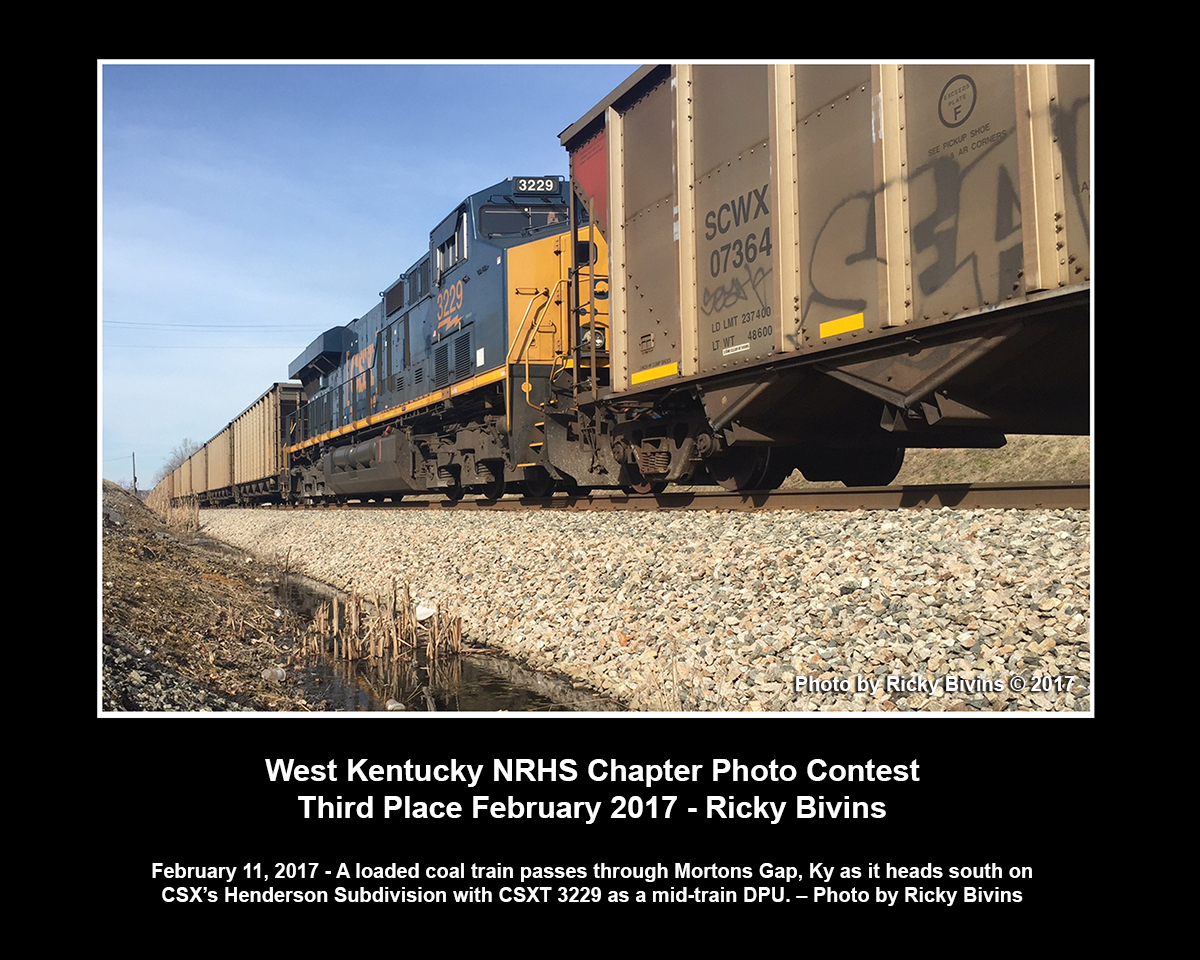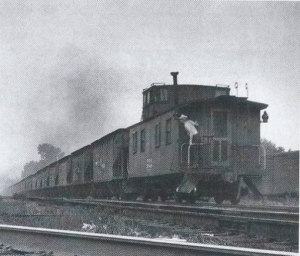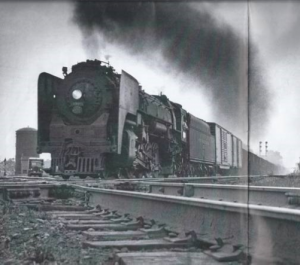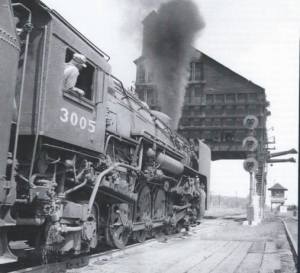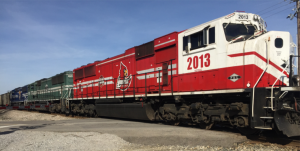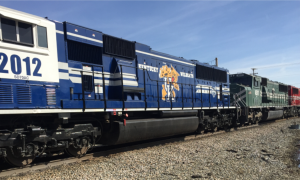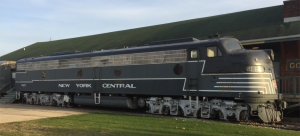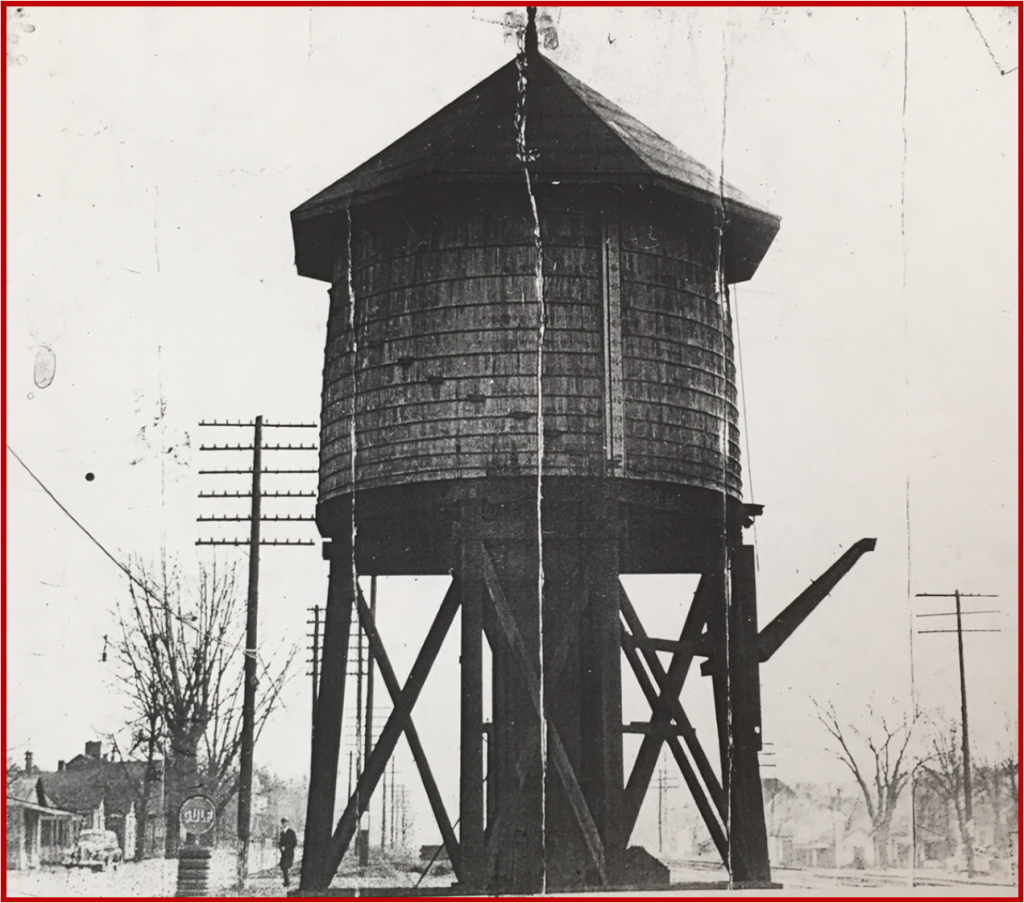Congratulations to the winners of our chapter’s first photo contest of the year! Contest was held during the month of February 2017 and the winning photos and captions are posted below! Click on any photo to see a larger view.
Month: February 2017
Setting the stage: In the early 50s, when steam engines were dropping out of the picture at an alarming rate, TRAINS Magazine send Editor David P. Morgan and his close pal Dr. Philip R. Hastings out into the hinterland to record their demise in word and B&W. As expected they did a spectacular job, Morgan’s prose and Hasting’s lens recording history, never to be repeated. Between them, a hotshot hoghead and a worn but game 4-8-2, forget what year it is and pretend this dead freight is the 20th Century Limited.
Morgan and Hastings found action in Galion, Ohio. New York Central Extra 3005 East was doing some car shuffling and would depart soon. Like most railfans, they hopped in the car and raced 13 miles to Shelby, where an equally busy line of the Baltimore & Ohio Railroad crossed.
The dispatcher had temporarily lost track of Extra 3005 East and was attempting to pin down his location and whether or not he had his train in one piece. In the words of Morgan, “the conversation, as relayed to us by the operator, gave no direct hint of what was to come. As a result neither Hasting nor I noticed a faint smudge of smoke building in the horizon to the west. A distant whistling was adjudged to be yet another first-class schedule, and we were scanning the timecard to identify it when another, nearer blast propelled us to trackside on the double.
“Why, it’s the extra! Can’t be — he might just have — it is and he’s rolling!” Rolling is mild language for what he was doing. Extra 3005 East, now no less than 98 cars between tank and caboose, was bearing down on Shelby with all the implications of destiny of the Book of Revelation, gaining momentum with each revolution of those four pairs of 69-inch drivers, making the legal mile-a-minute with ease and perhaps a notch or two better. The elephant-eared aristocrat of an Alco rammed across the diamond with smoke going high, the Baker up near center, and the crew enjoying the breeze. Out of her dusty wake came her train — rattling, rocking, rolling, riding to Cleveland at such a pace that as Hastings recalls it, “one felt called upon to wonder at what moment the whole shebang would take either to the air or to the adjacent countryside.”
The wooden hack bringing up the markers shot off into the distance. Left in the sudden quiet were two rather shaken train-watchers, one startled operator, and the voice of a dispatcher who, with noticeable alarm, had (1) discovered the pace of Extra 3005 East, and (2) was attempting to stop him so that slower but more legitimate occupants of the eastbound main — passenger trains — could overtake the dead freight they had been supposed to run around.
Wonderful! Too often steam departs from us in the form of a fan trip that suffers an engine breakdown . . . How much better to wind it up like the 3005, taking a quiet Ohio town apart, pinning its ears back, performing like Alco said her 4410 cylinder horsepower should perform. Abdicate..? — not willingly.
Credits: Photos by Dr. Phil R. Hastings & excerpts by Editor David P. Morgan as seen in “In Search or Steam, Volume II: 1954 – 1955
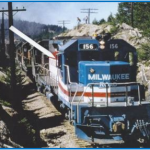
The arrows point to a window apparatus not standard on most diesel locomotives. Milwaukee Road ‘s #156 was one of the many U. S. railroads theme units celebrating our 200th Anniversary back in 1976. You can see why it was one of the favorites.
All weather bay windows, like that shows here, were standard on all modern Milwaukee motive power. They were installed on the engineers side only. It allowed the engineer to lean to his right and look both forward and rearward, important when switching, as it was necessary to see hand signals from crewmen on the ground.
The window seen here is made of durable fiberglass construction, and proven to be more user friendly that the earlier plywood and later aluminum versions. Note that a clear piece of plexi-glass allowed him view the ground immediately below. In darkness, under certain conditions, it was difficult to judge movement, particularly with moving equipment on adjacent tracks, as in a yard. A downward shining light enhances this view. All weather windows allowed the engineer to perform his duties in the relative comfort of a dry cab.
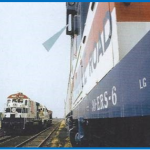
The bay window did not replace the standard cab side windows and common practice was to leave the engineers side windows open, except in extreme cold when they would be closed to minimize drafts.
Radios have eliminated the necessity of an engineer looking for hand signals. – Gary Ostlund
Mike Schafer and Art Danz contributed to the story
I hope everyone was able to enjoy the unusually warm January days made available to us. I was able to get over to one of my favorite train watching spots, Gorham IL. Matt Gentry joined me and we had a fun day watching and seeking out trains on the former MoPac and Cotton Belt lines.
The January meeting was a bit long but very informative. Our meeting place last month was the former Hopkins County Court House located in Madisonville. Bob and Bob from the Historical Society of Hopkins County were excellent hosts and the facility was good. We were treated to a tour of the building and provided information regarding the forth coming Coal Museum. We were not given a lot of information as to the needs and/or expectations of the Chapter if we decide to participate but most everyone agreed this is a good opportunity for our group to get the word out about our local railroad history.
To recap, the entire south wing, which is roughly half of the museum display area could be allotted to the Chapter. We will provide our own display cases, shelving, hangers etc. as well as the display items. Security will be excellent. The museum will be staffed by volunteers. We will have access to the area in off hours. We will have to build, equip and maintain the area we commit to. Filling display cases with railroad and coal related artifacts will not be a problem, we all have something. (I can fill one room myself)! Meeting a work schedule during construction I feel will be easy. Everyone will be eager to participate early on. Down the road (rail), maintaining and manning the museum for special events I see a potential issue. If we commit to this endeavor, we commit fully!
As mentioned in the minutes and at the previous meeting, I would like to grow our Photo Archive, see the Archive on-line in some form and make the information available to other not-for-profit organizations as well. Steve Miller, Jim Pearson and I are the committee members for this project. Submit your ideas to us.
The National Convention will be held in Nashville TN, this is close to home. Will King, Bill Farrell and Jim Kemp are committee members for “Project Nashville”. Let us see what we can do to aid in the Convention.
And as always, National dues are due, March 31 is the cut-off date. Dues received after March 31 will be treated as a new member thus losing member seniority.
I hope to see you February 20, 2017 at the Hopkins County Government Center, 58 N. Main St. Madisonville KY. Meeting time is 7:00 PM. Bill Farrell has refreshment while I will have a combination talk and video program on Port Perry PA and its importance to the steel industry.
.Ricky Bivins, President
This is one of 62 New York Central E8 diesel locomotives as seen by my wife and I at the National NYC Museum in Elkhart, In. recently. General Motors built 450 of these from 1949 to 1954. Each unit was powered by two V-12 Diesel engines and were rated at 2250 HP. Many of these passenger engines were re-geared for freight use as the needs of the railroads changed. Rich Hane
 by Bill Thomas, editor, The PennyRail
by Bill Thomas, editor, The PennyRail
I need your stories! To show you how simple this is, listen to one of mine…
My first train ride was aboard a work train assigned to do some ditch work on the Hook & Eye line of Family Lines (formerly L&N). GP40 4010, in the dark Family Lines gray with red and yellow stripes was literally “chocked” with a wooden wedge at the old depot in Ellijay, GA. Behind it was a matching ex-L&N bay window caboose, and THEN… A JORDAN SPREADER! I’d never seen such a creature. While taking some black & white photos on Kodak Tri-X, I met up with the crew, who offered me a ride down the line. This was 1980, no cell phones, so I’m going rogue! At 17 I felt like being free anyway!
We pulled out and ran south (backward) for a few miles, then the work began with the big arms of the Jordan spreader doing their thing.
We gradually worked our way back to the depot, but my thrill of the day, was blowing the horn at the crossings. We ran along side my 8th grade civics teacher in her car, who waved to me. She was not surprised to see me in the cab of a locomotive!
I can remember this outing like it was yesterday. I hope you might have some similar stories to tell. It’s ok to make it personal, don’t worry about grammar, I’ll take care of that as your editor. Just start talking! (my apologies if you’ve heard this story before!)

From Don Clayton…
Due to some conflicting schedules with the 611 excursions, we are revising our Kanawha River trip schedule. This update is shown in the attached. The BNSF trip has been removed for rescheduling. Information on ticketing for the Piedmont & Northern trips will be available shortly. Sorry for any confusion!
March 17, 18, 2017 PIEDMONT & NORTHERN Four repeat trips over the 13-mile long P&N using an ex-IC caboose. Limited to 10 riders per trip. Trips will leave at 9AM and 1:30PM on both Saturday and unday. Fare: $125/trip. One space per trip in the locomotive at $250. Please identify which trip you desire: 17A (Saturday morning); 17B (Saturday afternoon); 18A (Sunday morning); 18B (Sunday afternoon), and an alternate selection if your choice is filled.
SANTA CRUZ & MONTEREY BAY RR. Trips canceled due to storm damage.
March 21, 2017. Deadhead trip Oakland, CA to Chicago in ex-Santa Fe dome cars. No sleeping accommodations. Meals included. $595.
March 25, 2017. STREATOR CIRCLE TRIP. A day trip from Chicago to Streator, IL on ex-AT&SF; then east on ex-NYC (now NS) back Chicago via Schneider, IN (connection with ex-NYC Cairo, IL line to Indiana Harbor). Lv. Union station 8AM; return around 5PM. Fares: Dome $495; Caritas (open platform obs. car) $595; coach seat $295. Lunch included.
June 3-12, 2017:. KANAWHA RIVER RAILROAD BEHIND ex-NKP 765. (Note: Kanawha River Railroad is a former NYC line, now operated by WATCO).
June 3: Deadhead to Pickerington, Ohio (near Columbus), load passengers, run to the village of Eclipse (near Athens) or as far as practical. Use Kanawha River Railroad unit to pull train back to Pickerington/Watkins Yard. Total is about 150 miles.
June 4: Deadhead to Pickerington, Ohio to load passengers, then run two short trips, Pickerington to Glouster and return, about 114 miles per trip. Use Kanawha River Railroad unit to pull train on all westbound moves.
June 5: Deadhead train to either Nitro or Dickinson Yard for storage during week.
June 9: Diesel trip, Charleston as far as we can go toward Enon, MP WV253 and return. Total of about 140 miles.
June 10: Load passengers at the University of Charleston stadium in downtown Charleston and run to Maben. Bus passengers to the Beckley Exhibition Coal Mine, deadhead train to Mullens/Elmore to wye. Deadhead move may be occupied. Total is about 170 miles.
June 11: Repeat of Saturday’s trip.
June 12: One way move from Charleston to Pickerington, Ohio, Then deadhead into
Watkins yard. Equipment will be 611 Steam Train consist plus Caritas and Cimarron
River. Pricing to be determined.
September 14-22, 2017: AAPRCO Convention in Burlington, VT
The Special Train will start in Albany/Renssalaer, NY on a route not yet finalized but
including major portions of the Vermont Rail System. The actual convention dates are
September 19-22. We will be participating with the Caritas and Cimarron River.
Clark Johnson Today, 9:07 AM
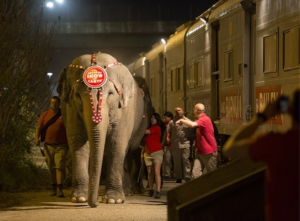
Circus cars are sound, but heavily altered – Expert cautions passenger car enthusiasts, museums that circus cars were cleaned out for work
By Steve Glischinski | January 20, 2017
ELLENTON, Fla. — At first glance, the announced shutdown of the Ringling Bros. and Barnum & Bailey Circus would appear to be a boon to railway passenger car preservation. There may suddenly be available a vast fleet of heritage passenger cars that Ringling Bros. maintained in excellent mechanical condition. You won’t find rust and rot in Ringling’s fleet, all of which has been equipped with head-end electrical power.
The problem for museums and preservationists is there is a little if anything left of the original interiors, says Brad Black, a vice president with Virginkar & Associates, Inc., which consults on passenger car and rail transit rolling stock, equipment, and locomotive projects. Black says the cars have been “tunneled out,” with the interiors stripped to empty shells. So the cars bear no resemblance to when they were in their previous service. In fact, Black says, in recent years Ringling has been purchasing old coaches rather than sleeping cars, because there are fewer interior walls to tear out.
Cars were assigned to specific acts. After being stripped, Ringling installed a custom interior, based on the needs of that act. Some acts occupy an entire car, while others would be divided up. Interior furnishings were tailored to the act, and might even contain special areas for equipment the act would need to take along. Typically, acts were on the road for two years, and the car was considered their home. Some cars don’t even have aisles through them, since performers generally did not pass through the cars while on the road.
“They are more like hotel rooms than rail cars,” Black says. “So if a museum is going to preserve it as a Ringling Circus car that would work. But if they are thinking, ‘The car was originally this,’ and they are getting that, not really. They tunneled them completely out.”
The cars could be valuable, Black said, to someone who was building a private train and needed empty “shell” cars. “The underbody equipment is very much up to snuff,” He says. “They are good, mechanically sound shells.”
Cars that might be of particularly use for museums and other organizations, Black says, are the six-wheel-truck former elephant cars, and the power cars, which once were owned by Union Pacific. In particular, Black said, the power cars are in excellent shape, and are “whisper quiet” when running.
Other cars that might be available are the large stock of un-rebuilt cars Ringling kept at its shop in Ellenton. Even if it didn’t have a use for a car, Ringling scoured the country scooping up carbodies for possible future use. When a car wasn’t destined for immediate rebuilding, its trucks were usually quickly rebuilt and put to use, so there are a large number of carbodies stored at the shop without trucks.
Black said the Ringling shutdown came as a shock to members of the Railway Passenger Car Alliance, an organization private railroad equipment owners and operators. Some RPCA members have been providing equipment and parts for Ringling’s cars for several years, and have suddenly lost a major customer.
One fear, Black said, is that Ringling might just scrap its rail cars. Most of its flatcars have reached 50 years old; Ringling was planning a rebuild that now will never come. The company could decide to simply dispose of the car fleet to scrappers, save a handful going to circus related museums.

